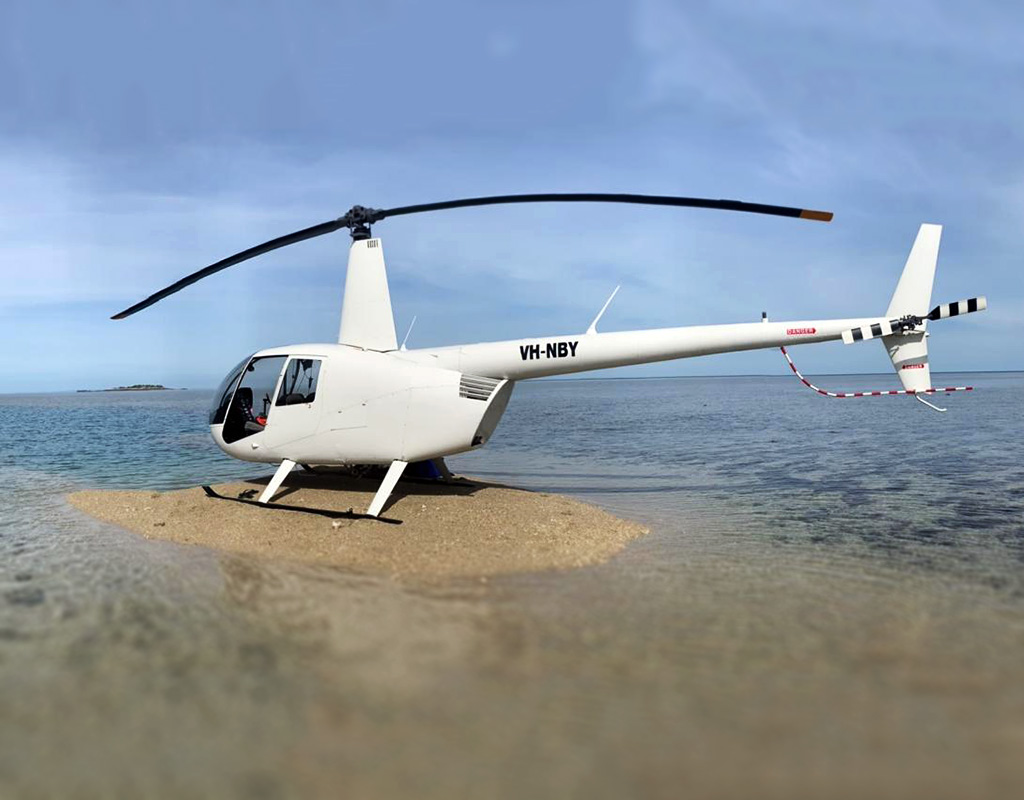
An ATSB investigation into a fatal helicopter accident that occurred shortly after take-off from a yard in a Broome industrial suburb highlights the crucial importance of pilots formally declaring their helicopters to be unserviceable when the source of unusual vibrations has not been identified and rectified.
On 4 July 2020, a Robinson R44 helicopter with a pilot and three passengers on board conducted a vertical departure from an industrial property at Bilingurr, 3 km north of Broome Airport, to conduct a private joyflight. As the helicopter climbed clear of obstacles and transitioned to forward flight, witnesses on the ground heard a loud bang, and observed the helicopter’s empennage and tail rotor system separate and break away.
The helicopter continued to climb and commenced rotating to the right with increasing angular velocity, before control was lost, and it impacted a road on its right side. The pilot and the passenger, who were seated on the right side of the helicopter were fatally injured. The two passengers who were seated on the left side of the helicopter sustained serious injuries.
“The ATSB found that an overstress fracture of the tail rotor gearbox’s input cartridge occurred following a period of vibration in the helicopter’s tail rotor pedals,” said ATSB Chief Commissioner Angus Mitchell.
“This overstress fracture, shortly after take-off, led to the separation of the tail rotor gearbox from the helicopter, and the subsequent separation of the aft tail section.”
The ATSB’s investigation report notes the helicopter’s two previous flights were conducted by two separate pilots (including the accident pilot, who was also the helicopter’s owner), who both reported experiencing vibration in the helicopter’s tail rotor pedals.
In response the owner requested that their local approved maintenance organisation assess the vibration. Engineers from the maintenance organisation assessed the helicopter in the yard on the afternoon of 3 July. They found the tail rotor balance to be within limits, and a close inspection of the tail cone, tail rotor and empennage of the helicopter detected no issues. Further, no vibration in the pedals was detected during ground running of the helicopter in the yard.
Nonetheless, the maintenance engineer reported wanting a pilot to fly the helicopter to determine if the reported vibration in the pedals was detectable in flight.
However, while the requirement for a maintenance check flight was not recorded on the helicopter’s maintenance release, the owner of the maintenance organisation advised the ATSB that they advised both the owner and the pilot who first detected the vibrations of the requirement to fly the helicopter to provide more information. Friends and family of the owner of the helicopter stated that no request for further flight was made.
“As the vibration was reported to only occur in flight, and no defect was identified, it was reasonable to have concluded that the problem may still be present,” said Mr Mitchell.
“As such, the safest next step, which is recommended by the helicopter manufacturer, would be to conduct a graduated flight check of hovering then re-inspection. Preferably, this would be with only a prepared pilot on board.
“Instead, the next flight, during which the accident occurred, involved the conduct of a high‑power towering take-off from a confined area with 3 passengers on board.”
The investigation report notes that the registered operator of an aircraft has ultimate responsibility for its airworthiness.
“This accident demonstrates the importance of following a conservative troubleshooting process that minimises risk.”
Mr Mitchell noted that while the source of the loading that led to the overstress fracture was not conclusively determined, the pilot’s operating handbook for the R44 helicopter states that the onset of unusual vibrations can indicate impending failure of a critical component.
“The pilot’s handbook states that pilots should land as soon as possible and formally declare the helicopter unserviceable.
“Crucially, the helicopter should not be returned to service until the source of the vibration, both on the ground and airborne, has been found and rectified.”
Mr Michell also noted that private pilots do not, unlike commercial and airline pilots, have the benefit of regular flying and frequent training and checking.
“The ATSB recommends private pilots to not rely on the minimum training and checking and training currency requirements to keep safe, and that they assess their risk profile and seek opportunities to maintain and develop their skills with a flight instructor.”
Read the report: In-flight breakup involving Robinson R44 Raven I, VH-NBY, 3 km north of Broome Airport, Western Australia, on 4 July 2020
This press release was prepared and distributed by the ATSB.

